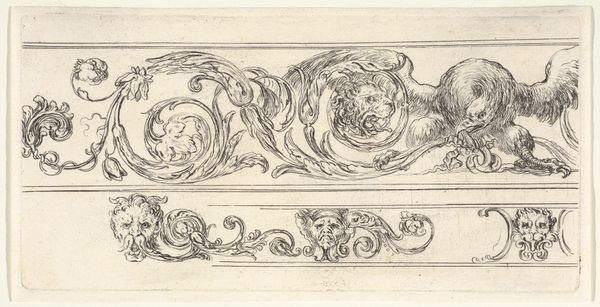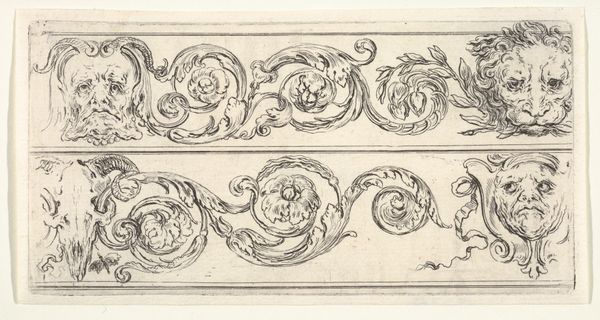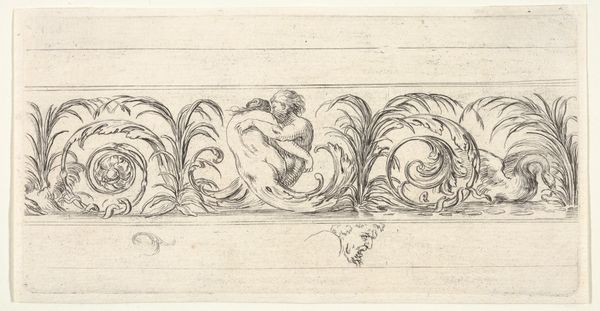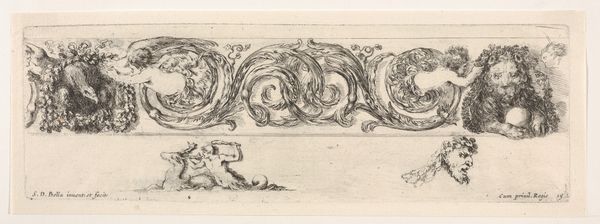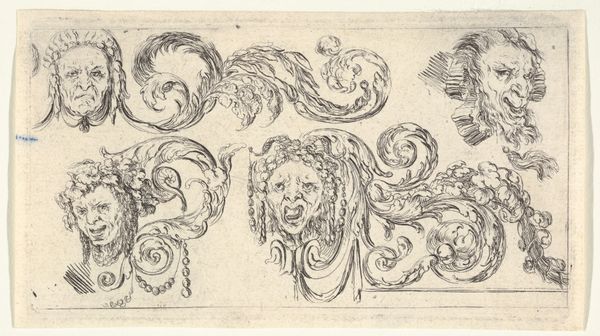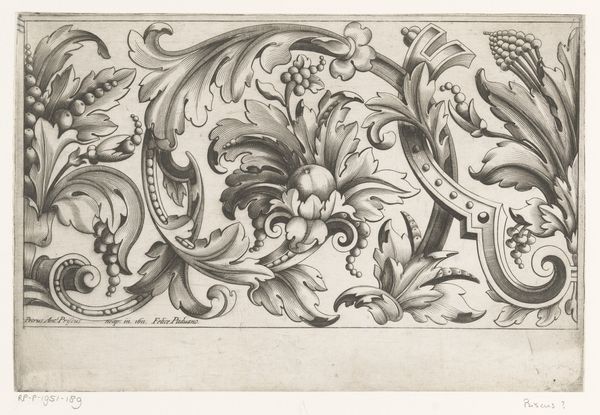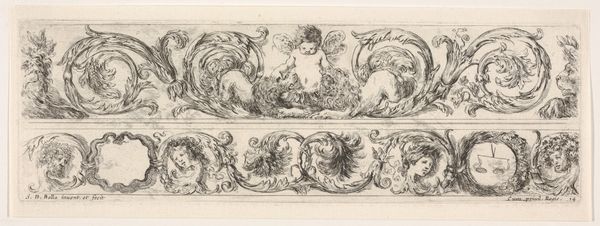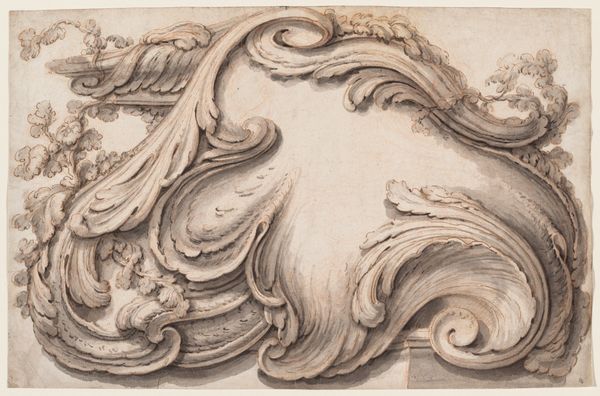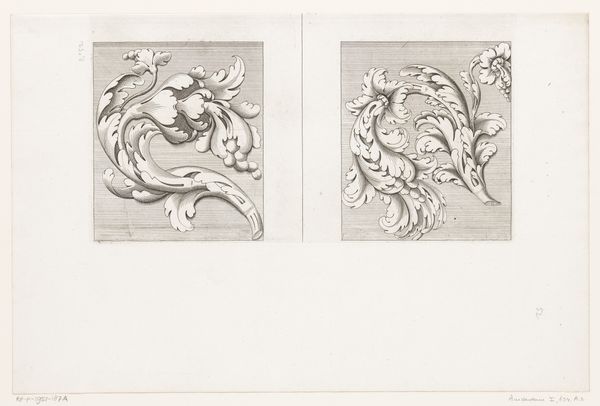
Plate 2: three fragments of friezes; on top, a grotesque head of a man, a skull of a ram at bottom left and a chimera at bottom right, from 'Friezes, foliage, and grotesques' (Frises, feuillages et grotesques) 1638 - 1643
0:00
0:00
drawing, print, etching, graphite, engraving
#
drawing
#
baroque
# print
#
etching
#
figuration
#
line
#
graphite
#
history-painting
#
engraving
Dimensions: Sheet: 2 7/16 × 4 7/8 in. (6.2 × 12.4 cm)
Copyright: Public Domain
Editor: This is "Plate 2: three fragments of friezes," an etching by Stefano della Bella from around 1638 to 1643. The level of detail is striking, especially considering it’s a print. I’m curious about the recurring motifs here – the grotesque head, the ram’s skull, the chimera… they create a somewhat unsettling feeling. What do you see in this piece? Curator: I see a reflection of the Baroque era's fascination with antiquity, filtered through a lens of sociopolitical dynamics. Friezes, like these, served not just as decoration but as signifiers of status and cultural capital. The inclusion of grotesque figures and chimeras is very interesting. Editor: In what sense? Curator: Well, they're not purely decorative. They hint at the darker side of power, perhaps commenting on the absurdities and excesses of the ruling class, reflecting the tumultuous times. Also, consider where these prints might have been displayed, think about their role in shaping perceptions. Did the elite see themselves reflected in the grandeur, or was there an underlying critique being offered to the broader public? Editor: So, these images aren’t just embellishments; they're also political statements? Curator: Potentially. Remember that the printing press made images widely accessible. The power to control narratives through imagery was—and still is—a very potent force. Think about the function and impact that printed ornament had upon social life, visual experience, and even interior design practices. Editor: That's a fascinating perspective. I was focused on the aesthetics and the strangeness of the figures, but you've made me realize the much bigger conversation they might be a part of. Curator: Precisely! The beauty of art history is uncovering those layers and understanding the multifaceted role art plays in society. Editor: Definitely! It gives me so much more to consider in this image. Thanks for sharing!
Comments
No comments
Be the first to comment and join the conversation on the ultimate creative platform.
